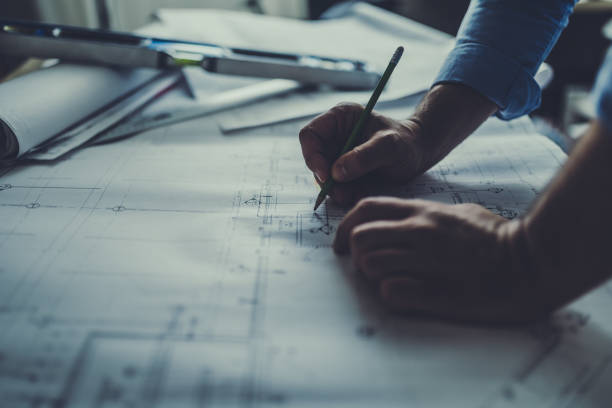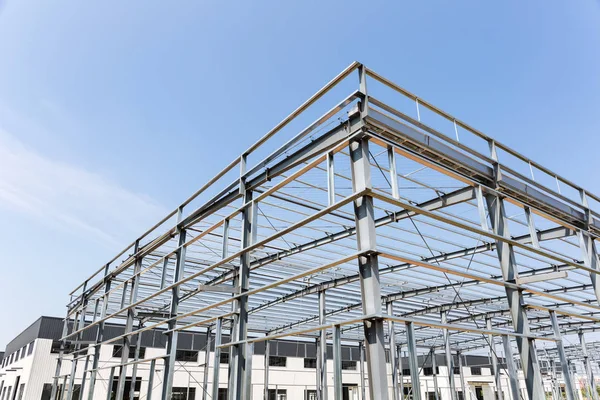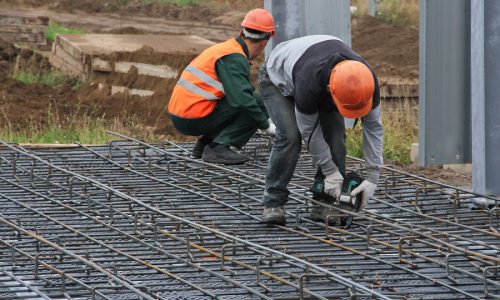
Structural Engineering Consulting Services
Building strength and stability through expert structural solutions

Building strength and stability through expert structural solutions

Structural analysis is the process of evaluating the forces, stresses, and deformations within a structure to ensure its safety, stability, and performance under various loads and conditions.

Seismic design is the specialized field of engineering focused on creating structures that can withstand the forces generated by earthquakes.

Foundation engineering is a critical branch of civil engineering that focuses on the design and construction of foundations to safely transfer a structure's load to the ground.

Experienced structural engineering consultants bring in-depth knowledge and practical expertise to the design and analysis of buildings, bridges, and other infrastructure. They specialize in delivering innovative and cost-effective solutions while ensuring safety, durability, and compliance with codes and regulations. They bring expertise in various materials and methods, offering tailored solutions for residential, commercial, and industrial projects. With a focus on innovation and precision, these professionals help clients optimize designs, mitigate risks, and achieve cost-effective, sustainable outcomes.
Structural analysis is a fundamental aspect of civil and structural engineering, focusing on evaluating the behavior of structures under various loads and environmental conditions. The goal is to ensure that the structure remains safe, functional, and durable throughout its lifespan.
Seismic design is a specialized area of structural engineering aimed at ensuring buildings and infrastructure can withstand the dynamic forces generated by earthquakes. The primary objective is to minimize damage, preserve life safety, and maintain functionality during and after seismic events.
Load testing is an essential technique in structural engineering to evaluate the safety, performance, and capacity of a structure under controlled loading conditions. It is used to confirm the structure's ability to bear expected loads during its service life and sometimes beyond, ensuring compliance with safety standards and design specifications.
Foundation engineering is a crucial branch of geotechnical and structural engineering that focuses on designing and constructing foundations to safely transfer the loads of a structure to the underlying soil or rock. It ensures stability, minimizes settlement, and prevents structural failures.
Flaw detection is a critical process in engineering and quality control that involves identifying defects, irregularities, or inconsistencies in materials, components, or structures. It ensures safety, reliability, and performance by detecting potential issues before they lead to failures.
Structural retrofitting involves strengthening or modifying an existing structure to improve its performance, safety, and durability. This process is typically applied to buildings, bridges, or infrastructure that require upgrades to meet modern safety standards, adapt to new usage demands, or repair damage caused by aging, environmental factors, or natural disasters.
Designing structures is the process of creating safe, functional, and efficient buildings, bridges, and other infrastructure by considering various engineering principles, materials, and standards. Structural design focuses on ensuring that a structure can withstand the loads and forces it will encounter throughout its lifespan while maintaining stability, safety, and performance.
Structural certification is a formal process where a licensed or qualified structural engineer verifies that a structure meets all relevant building codes, safety standards, and design specifications. It assures that the design, materials, and construction of a structure are capable of supporting the loads and forces it is expected to encounter throughout its service life. Structural certification is often required by authorities, developers, and clients before a building can be legally occupied, sold, or used.


Evaluating project feasibility is a critical process in project management and planning that involves assessing the viability, risks, and potential success of a proposed project. It helps stakeholders determine whether the project is worth pursuing by identifying the resources required, estimating costs, and analyzing both potential benefits and risks. The goal of this evaluation is to provide a comprehensive understanding of the project's likelihood of success and its alignment with the organization's strategic objectives.
Designing a structure is a comprehensive process that involves creating the layout, form, and components of a building or infrastructure system while ensuring safety, functionality, and durability. It requires a thorough understanding of engineering principles, material properties, construction techniques, and compliance with codes and standards. The goal of structural design is to create a structure that not only performs well under expected loads but also meets safety standards, cost-effectiveness, sustainability, and aesthetic goals.
Cost estimation is a fundamental process in project management that involves predicting the costs required to complete a project within a specified scope, quality, and time frame. In construction and engineering projects, accurate cost estimation is crucial to ensure that the project remains financially viable and can be completed without exceeding the allocated budget. Cost estimation helps project managers, engineers, and stakeholders make informed decisions and plan effectively.The process of cost estimation involves assessing all possible costs that will arise during the life cycle of the project, from the design phase to the final construction.
Obtaining planning and building permissions is a critical part of the construction process, ensuring that a proposed project meets legal, safety, and environmental standards set by local or national authorities. These permissions are necessary to protect public safety, health, and well-being while promoting orderly development. This process is often complex and involves multiple steps, stakeholders, and documentation.
Structural analysis is a critical aspect of civil and structural engineering that involves determining the effects of loads on physical structures and their components. It is the process used to calculate the behavior of structures under the influence of external forces such as weight, pressure, wind, seismic activity, temperature changes, and more. The main goal of structural analysis is to ensure that a structure can safely withstand these forces during its lifecycle while maintaining functionality, stability, and durability.
Safety evaluation is a critical process in engineering, construction, manufacturing, and various other fields. It involves assessing the potential risks and hazards associated with a structure, system, or operation to ensure that it operates safely and meets all regulatory, design, and performance standards. The goal of safety evaluation is to minimize the risks of accidents, injuries, and damages while promoting a culture of safety in every aspect of the project or operation. This evaluation helps to identify vulnerabilities in the design, construction, or operational phases and propose necessary corrective actions or improvements.
Material selection is a crucial process in the design and construction of structures, products, or systems. It involves the careful evaluation and selection of materials that will best meet the performance, durability, and cost requirements of a project. The right material choice ensures that the finished product will be functional, reliable, and safe, while also meeting environmental, aesthetic, and economic objectives.In engineering, particularly in structural engineering, material selection is vital because the performance of a structure is directly influenced by the properties of the materials used.
Seismic design refers to the process of designing buildings, bridges, and other structures to withstand the forces generated by earthquakes. It involves considering the seismic activity of a region, the structural integrity of the building, and the behavior of materials under seismic loading conditions. The goal of seismic design is to ensure that structures can resist seismic forces without suffering catastrophic damage, safeguarding both human life and property.Seismic design is based on the understanding of how earthquakes affect structures and involves a combination of engineering principles, building codes, and advanced analysis techniques.
Structural retrofitting is the process of strengthening or upgrading an existing structure to improve its performance, typically in response to changing conditions, new standards, or the discovery of vulnerabilities. This process is commonly used to enhance the safety and durability of buildings or infrastructure that were originally designed with outdated standards or that have suffered damage over time. Retrofitting can be applied to buildings, bridges, dams, tunnels, and other structures to ensure they meet current safety, performance, and regulatory standards.
Non-Destructive Testing (NDT) is a critical process used in engineering, construction, and manufacturing to evaluate the properties, integrity, and quality of materials and structures without causing any damage. NDT methods are widely used to ensure safety, reliability, and performance of materials and structures in a range of industries, such as civil engineering, aerospace, automotive, oil and gas, and manufacturing. These testing methods allow for the detection of flaws, irregularities, and potential weaknesses without compromising the serviceability of the materials being tested.